Exercises
Chapter 1
1.1 The probability of occurrence for letter E in English alphabet is maximal, and equals
0.105. Find its information content?
Solution:
The information content of E is:
I
E
log
2
1
E
P
log
P
2
E
log 0.105
2
3.25 b
1.2 An information source consists of A, B, C, and D. Assume each symbol occurs
independently, and the occurrence probabilities are respectively 1/4, 1/4, 3/16, and 5/16. Find the
information content for each symbol in the information source.
Solution:
AI
log
2
1
( )
P A
log
2
( )
P A
log
2
1
4
2
b
BI
log
2
3
16
2.415
b
CI
log
2
3
16
2.415
b
DI
log
2
5
16
1.678
b
1.3 An information source consists of A, B, C, and D. These symbols are represented by
binary codeword 00, 01, 11. If each binary symbol is transmitted by the pulse with width 5ms,
then find the average information rates respectively under the following conditions:
(1) The 4 symbols have equal probability of occurrence.
(2) The 4 symbols have the probabilities of occurrence as given in Exercise 1.2.
Solution:
(1) The symbol rate of the transmitted is:
When the probability is equal, the average information rate is:
R
B
1
3
10
2
5
100 Bd
R R
B
b
log
2
M R
B
log 4
2
200 b s
(2)The average information content:
3
16
log 4
log 4
1
4
1
4
H
2
2
log
2
16
3
5
16
log
2
16
5
1.977 /
b s
The average information rates is
R RH
100
1.977
197.7 b s
b
B
1.4 What is the symbol rate in the above exercise?
�
Solution:
R
B
1
T
B
1
5 * 10
3
200 Bd
1.5 Assume an information source consists of 64 different symbols,
the occurrence
probability of 16 symbols among them is 1/32, and the occurrence probability of other 48 symbols
is 1/96. If there are one thousand independent symbols per second sent out, find the average
information rate of the information source.
Solution:
The entropy of the information source is:
( )
H X
M
i
1
( )log
P x
i
2
( )
P x
i
64
i
1
( )log
P x
i
2
( )
P x
i
16 *
1
32
log 32
2
48 *
1
96
log 96
2
= 5.79 比特/符号
thus, the average information rate of the information source is:
bR
mH
1000 * 5.79
5790 b/s
1.6 Assume a signal source produces 4-ary signals with equal probability, and the width of
its symbol is 125μs. Find its symbol rate and information rate.
Solution:
When the probability is equal,
R R
B
b
log
2
M
8000 * log 4
2
16
kb s
/
1.7 Assume the equivalent resistance of the input circuit of a receiver is 600 Ω , the
bandwidth of the input circuit is equal to 6MHz, and the environment temperature is 23℃. Find
the effective thermal noise voltage produced by the circuit.
Solution:
V
4
kTRB
4 * 1.38 * 10
23
* 23 * 600 * 6 * 10
6
4.57 * 10
12
V
1.8 Assume a wireless link uses line-of-sight propagation for communication, and the
heights of the transmitting antenna and the receiving antenna are both 80m. Find the maximum
communication distance.
Solution:
By 2
D
rh
8
,
D
8
rh
8 * 6.37 * 10 * 80
6
63849 km
Chapter 2
2.1 Assume a random process
( )Xt can be expressed as
Xt
( )
2 cos(2
t
)
t
�
whereis a discrete random variable, its probability distribution is as follows.
P
(
0)
0.5
,
P
(
2)
0.5
Find
E Xt and
[ ( )]
XR
(0,1)
.
Solution:
E X t
(
P
0)
(
P
2)
2 cos(2
t
)
2 cos(2
t
)
2
cos(2
t
)
sin(2
t
)
XR
(0,1)
t
cos
2.2 Assume a random process
( )Xt can be expressed as
Xt
( )
2 cos(2
t
)
t
Judge it is a power or an energy signal. And find its power spectral density or energy spectral
density.
Solution:
It is a power signal.
R
X
( )
lim
T
lim
T
1
T
T
/2
/2
T
T
/2
/2
T
1
T
2cos(2
(
X t X t
( )
)
dt
t
)*2cos 2 (
t
)
dt
e
j t
2
e
j t
2
)
2 cos(2
1)
(
f
( )
P f
(
f
1)
j f
R e
( )
X
2
d
2
j t
(
e
j t
2
e
j f
e
)
2
d
2.3 Assume a signal can be expressed as
0
( )
xt
4 exp(
t
)
t
t
0
0
Is it a power signal or an energy signal? And find its power spectral density or energy spectral
density.
Solution:
It is a power signal. The Fourier transform of X(t) is:
X
j t
( )
( )
xte dt
The energy spectral density is:
0
t j t
4
e e dt
4
(1
0
e
j t
)
dt
4
j
1
G(f)==
1
2
4
j
16
4
2
2
f
1
2.4 Assume
( )
Xt x
1
cos 2
t x
2
sin 2
t
is a random process, where 1x and
2x are
statistically independent Gaussian random variables, and their mathematical expectations are 0,
�
variances are 2 .
Find :
(1)
E Xt E X t ;
[ ( )], [ ( )]
2
(2) The probability distribution density of
( )Xt ;
(3)
XR t t .
( , )
1
2
Solution:
(1)
E X t
E x
1
cos 2
t x
2
sin 2
t
cos 2
t E x
1
sin 2
t E x
2
0
since
1x and
2x is independent of each other, thus
E xx
1 2
E x E x
2
1
.
and because
E x
1
E x
2
0
, 2
2
E x
1
2
E x
1
,thus
2
E x
1
2
E x
2
2
.
so
E X t
2
2
cos 2
t
2
sin 2
t
2
2
(2) Since
1x and
2x obey a Gaussian distribution,
X t is the linear combination
of
1x and
2x , so
X t obey a Gaussian distribution as well, its probability distribution function
is
p x
1
2
exp
2
z
2
2
.
(3)
R t t
2
,
1
X
E X t X t
2
1
E x
1
(
cos 2
t x
2
1
sin 2
t x
1
)
1
cos 2
t x
2
2
sin 2
t
2
2
cos 2
t
1
cos 2
t
2
sin 2
t
1
sin 2
t
2
2
cos 2 t t
1
2
2.5 Which of the following functions will satisfy the condition of the power spectral density?
(1)
( )
f
2
cos 2
f
;
(2)
a
(
)
f a
;
(3)
exp(
a f
2
;
)
[Hint: eq. (2.2-34) can be used for validation.]
Solution:
According to the nature of the power spectral density P(f): ①P(f)
0
, Non-negativity;
②P(-f)=P(f), even function. Thus (1) and (3) satisfy the condition of the power spectral
density, (2) doesn’t.
2.6 Find the autocorrelation function of
Xt A
( )
cos
t
, and find its power from its
�
autocorrelation function.
Solution:
R( ,
tt
)
E XtX
[ ( ) (t
)]
E A
cos
t A
*
cos(
t
)
21
2
AE
cos
Power
P R
(0)
2
A
2
cos (2
)
t
2
A
2
cos
R
( )
2.7 Assume
1( )X t and
2( )X t are two statistical independent stationary random processes,
and their autocorrelation functions are
XR and
1( )
XR respectively. Find the autocorrelation
2( )
( )
Xt X tX t
( ) ( )
1
2
.
function of their product
Solution:
R( ,
tt
)
E XtX
[ ( ) (t
)]
[ ( ) ( ) (t
E X tX tX
1
1
2
) (t
X
2
)]
=
E X tX t
( ) (
1
1
)
E X tX t
( ) (
2
2
=
)
R R
( )
X
1
X
2
( )
2.8 Assume a random process is ( )
Xt mt
random process, and its autocorrelation function is
( )cos
t
, where ( )mt is a generalized stationary
mR
( )
1
1
0
0
1
1
0
else
(1) Draw the curve of the autocorrelation function
( )XR ;
(2) Find the power spectral density ( )
XP f and the power Pof ( )Xt .
Solution:
(1) The waveform is shown in Fig. 2-1.
xR
21
1
0
1
Fig. 2-1 waveform of the signal
�
(2) Since
R
P
X
( )Xt is a generalized stationary random process,
XR
the waveform of
In Fig.2-1,
.
X
density
thus its power spectral
is the product of a
cosine function and a triangular wave, thus
xP
1
2
0
1
4
2
Sa
0
2
2
Sa
0
2
0
2
Sa
2
1
1
2
P
1
2
d
P
x
1
2
, 或
S R
x
0
1
2
2.9 Assume the Fourier transform of the signal
( )xt is ( )
X f
sin
f f
. Find the
autocorrelation function
( )XR of the signal.
Solution:
The energy spectral density of ( )xt is ( )Gf =
(
X f
)
2
=
2
sin f
f
0
1
else
0
1
Its autocorrelation function
XR
Gfe df
( )
j f
2
,
1
1
0,
2.10 The autocorrelation function of a noise
( )nt is given as
( )
R
n
k
2
k
e
k
constant
(1) Find its power spectral density
( )nP f and its powerP;
(2) Draw the curves of
( )nR and ( )nP f .
Solution:
(1)
( )
P f
n
R e d
( )
n
j
k
2
k
e e d
j
2
k
(2
2
f
)
2
k
P R
n
0
k
2
(2) The waveform of
and
( )nR
nR
nP f is shown in Fig. 2-2.
2k
0
fPn
1
0
f
�
Fig. 2-2
2.11 The autocorrelation function of a stationary random process
( )Xt is given to be a
periodic function with period 2:
R
( )
1
1
1
Find the power spectral density
XP f of ( )Xt , and draw its curve.
( )
Solution:
See example 2-12
2.12 The double-side power spectral density of a signal is given by:
( )
P f
X
2
f
4
10
0
f
10KHz
10KHz
else
Find its average power.
Solution:
P
P fdf
( )
X
2
3
10 *10
0
10
2
4
fdf
2 * 10
4
*
3
f
3
4
10
0
2
3
* 10
8
2.13 Assume the input signal is
( )
xt
te
0
t
t
0
0
It is applied on a high-pass filter consisted of a resistor R and a capacitor C (see Fig. P2.1),
RC
. Find the energy spectral density of its output signal ( )yt .
Solution:
The system function of a high-pass filter is
2cos(2
t
The Fourier transform of the input signal is
( )
X t
(
H f
)
),
t
(
X f
)
1
1
2
j
f
2
j
f
1
The energy spectral density of the output signal y(t) is
�
( )
G f
y
2
( )
Y f
( ) ( )
X f H f
2
(
R
R
1
2
j fC
)(1
1
)
2
j f
2.14 A periodic signal
( )xt is applied on the input of a linear system, and the output signal
is
Where is a constant. Find the transfer function
( )
yt
[ ( )
]
dxt dt
( )H f of the linear system.
Solution:
The Fourier transform of the output signal is
j f X f
* ( )
2
H f Y f X f j f
( ) ( )
2
thus
Y f
( )
( )
*
2.15 There is a RC low-pass filter as shown in Fig.2.10.4. When the input is a white noise
with mean 0 and double-side power spectral density 0 2n , find the power spectral density and the
autocorrelation function of the output.
Solution:
See example 2-10
2.16 There is a LC low-pass filter as shown in Fig.P2.2. If the input signal is a Gaussian
white noise with mean 0 and double-side power spectral density 0 2n , find:
(1) The autocorrelation function of the output noise;
(2) The variance of the output noise.
Solution:
(1) The system function of a LC low-pass filter
( )
H f
2
2
j fC
2
2
j fC
j fL
2
1
1
2
4
f LC
2
The power spectral density of the output process
n
0
2 1
(
)
P
0
H
P
i
)
(
)
2
(
1
2
LC
Do Inverse Fourier transform for the power spectral density, the obtained autocorrelation
function is
�
















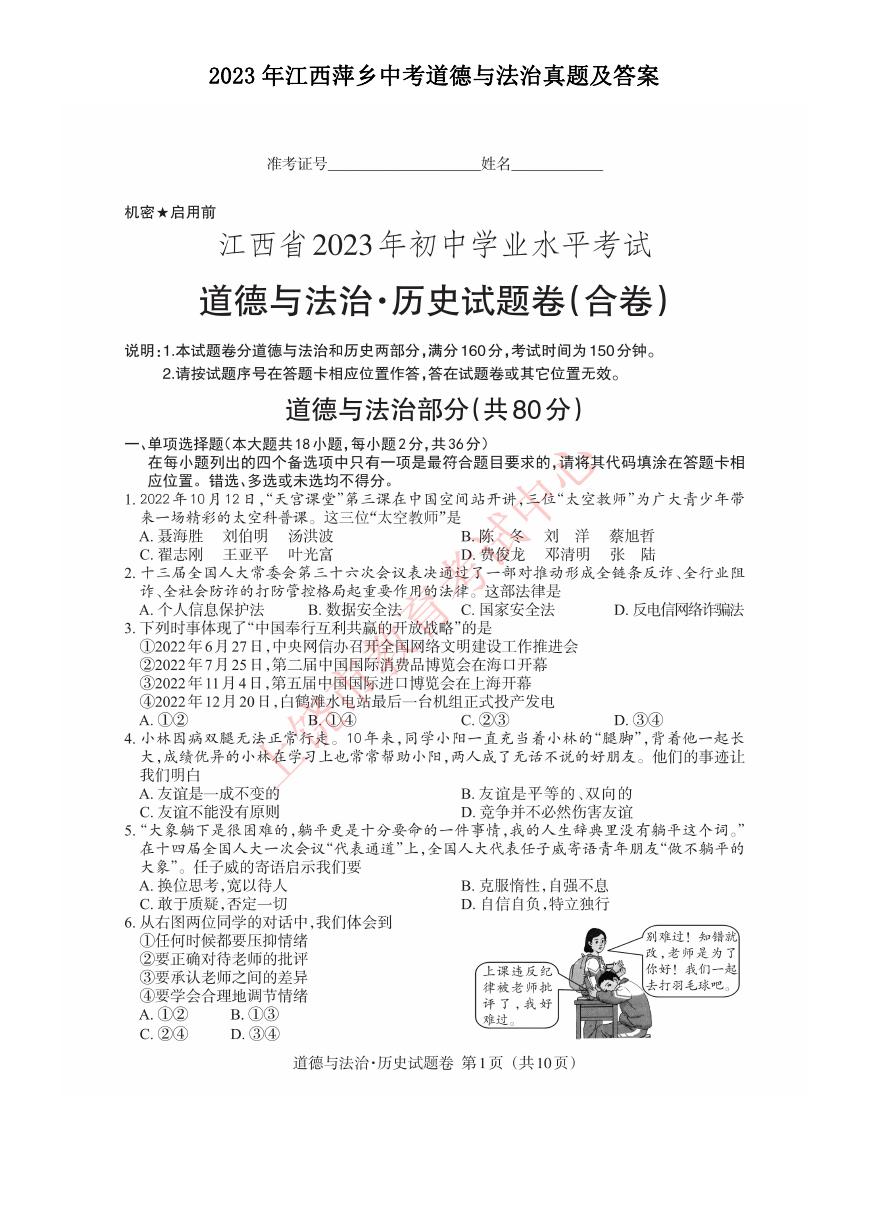 2023年江西萍乡中考道德与法治真题及答案.doc
2023年江西萍乡中考道德与法治真题及答案.doc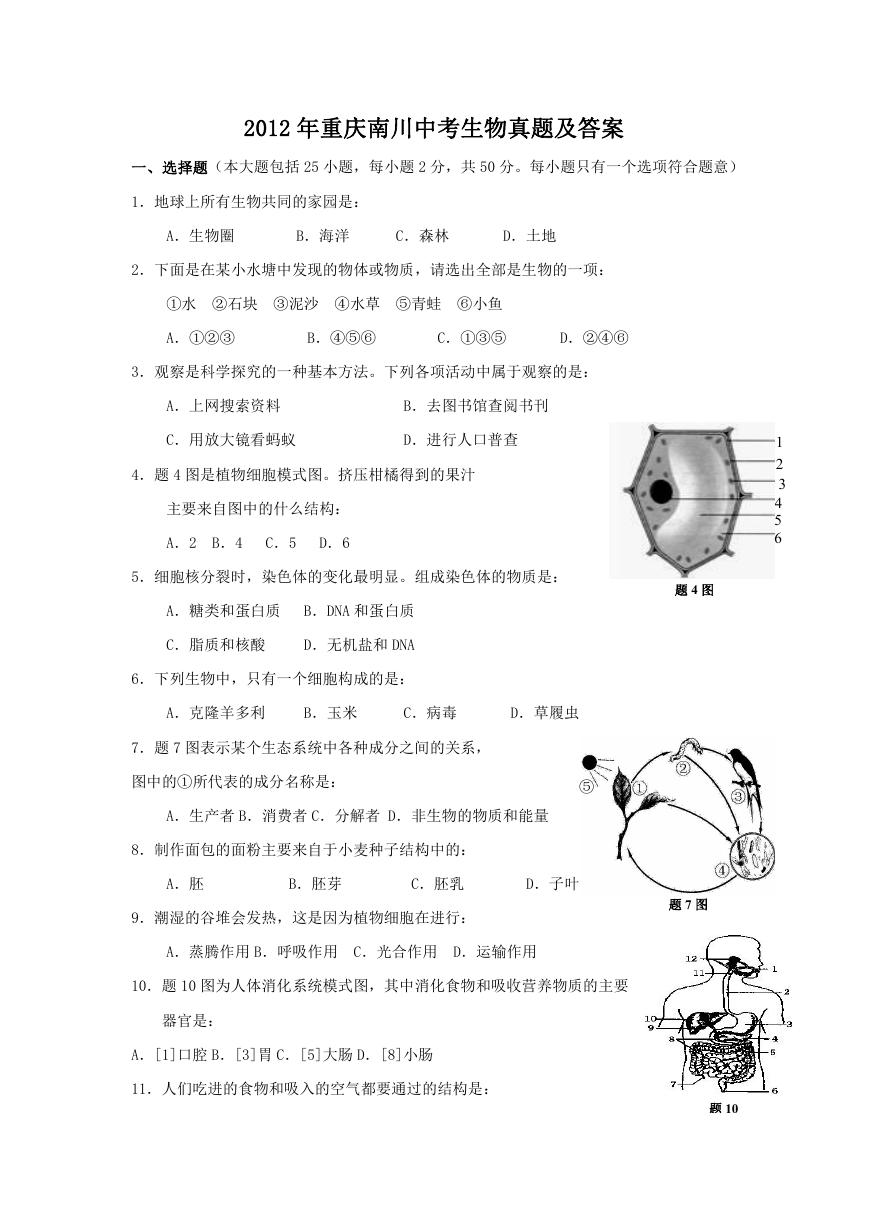 2012年重庆南川中考生物真题及答案.doc
2012年重庆南川中考生物真题及答案.doc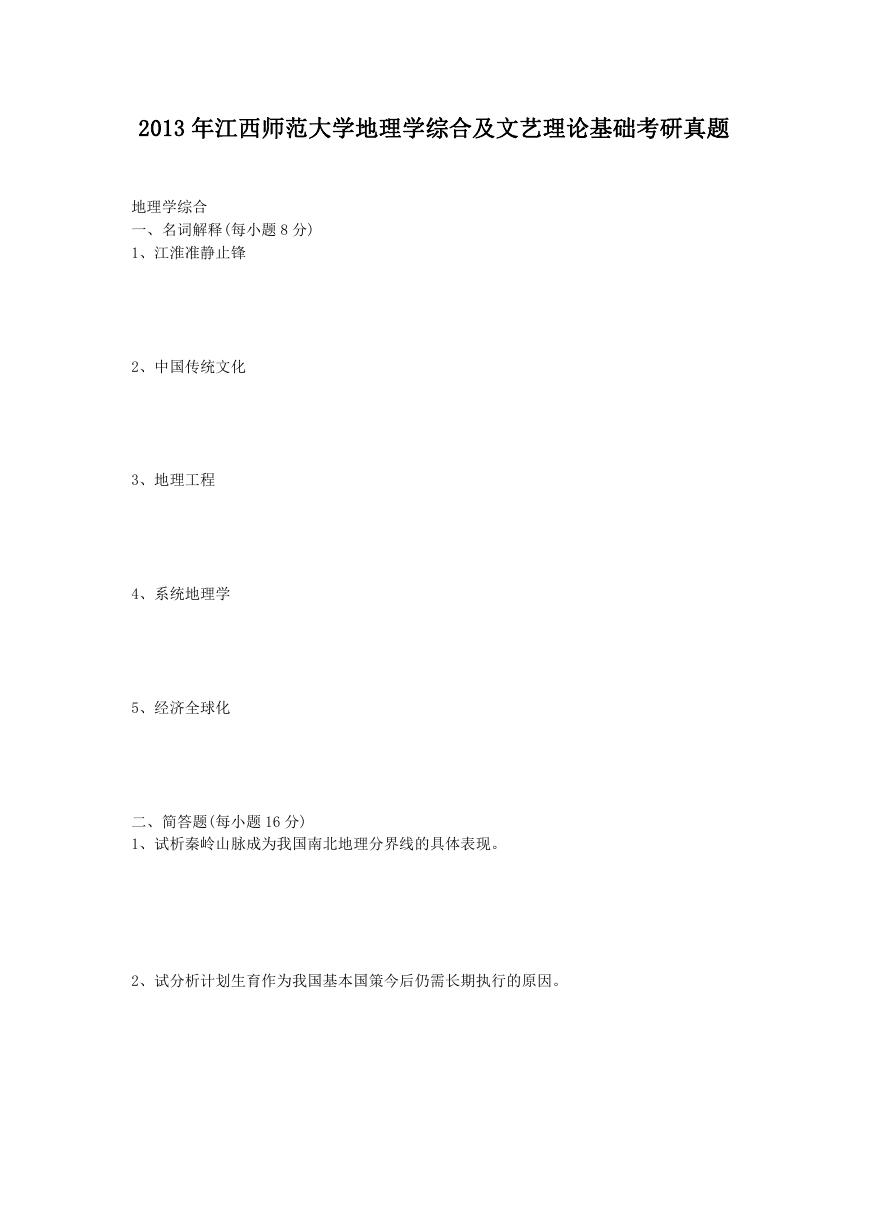 2013年江西师范大学地理学综合及文艺理论基础考研真题.doc
2013年江西师范大学地理学综合及文艺理论基础考研真题.doc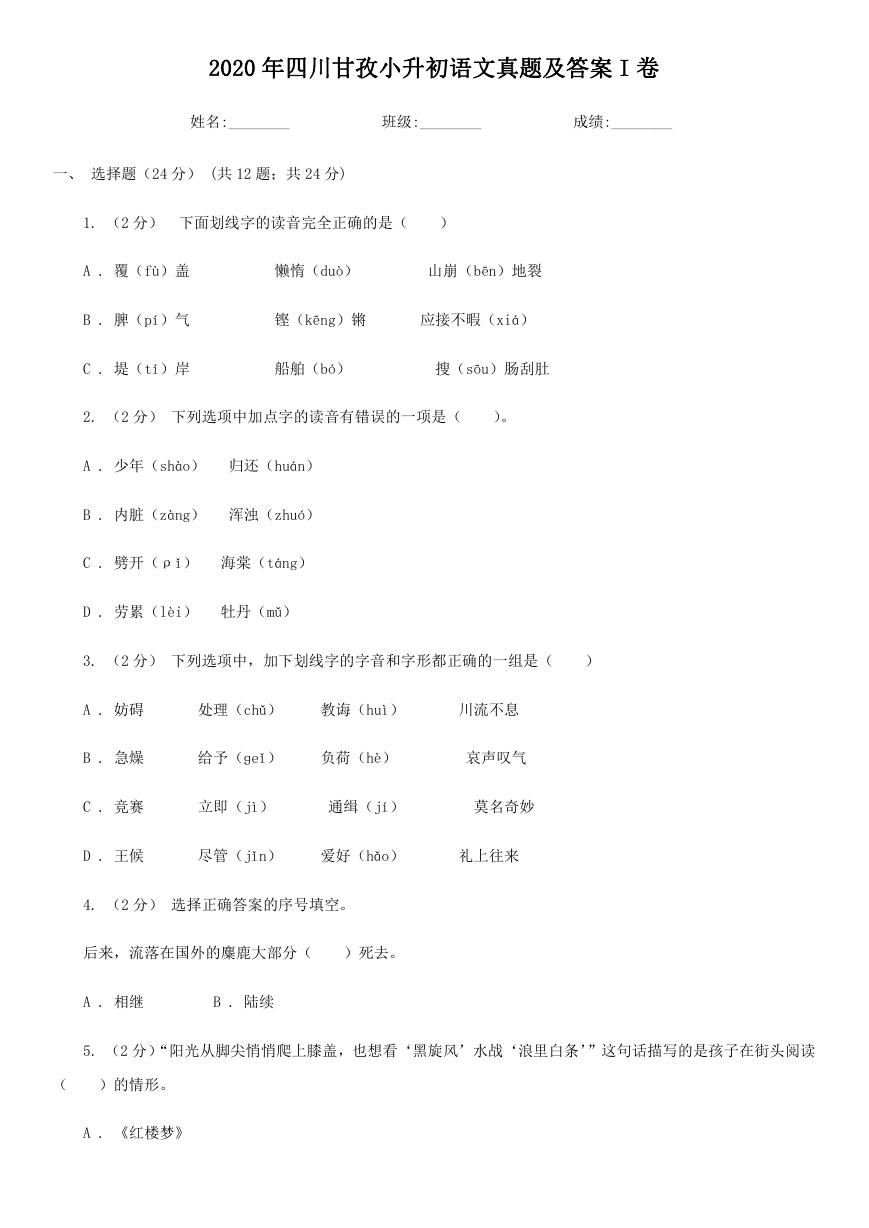 2020年四川甘孜小升初语文真题及答案I卷.doc
2020年四川甘孜小升初语文真题及答案I卷.doc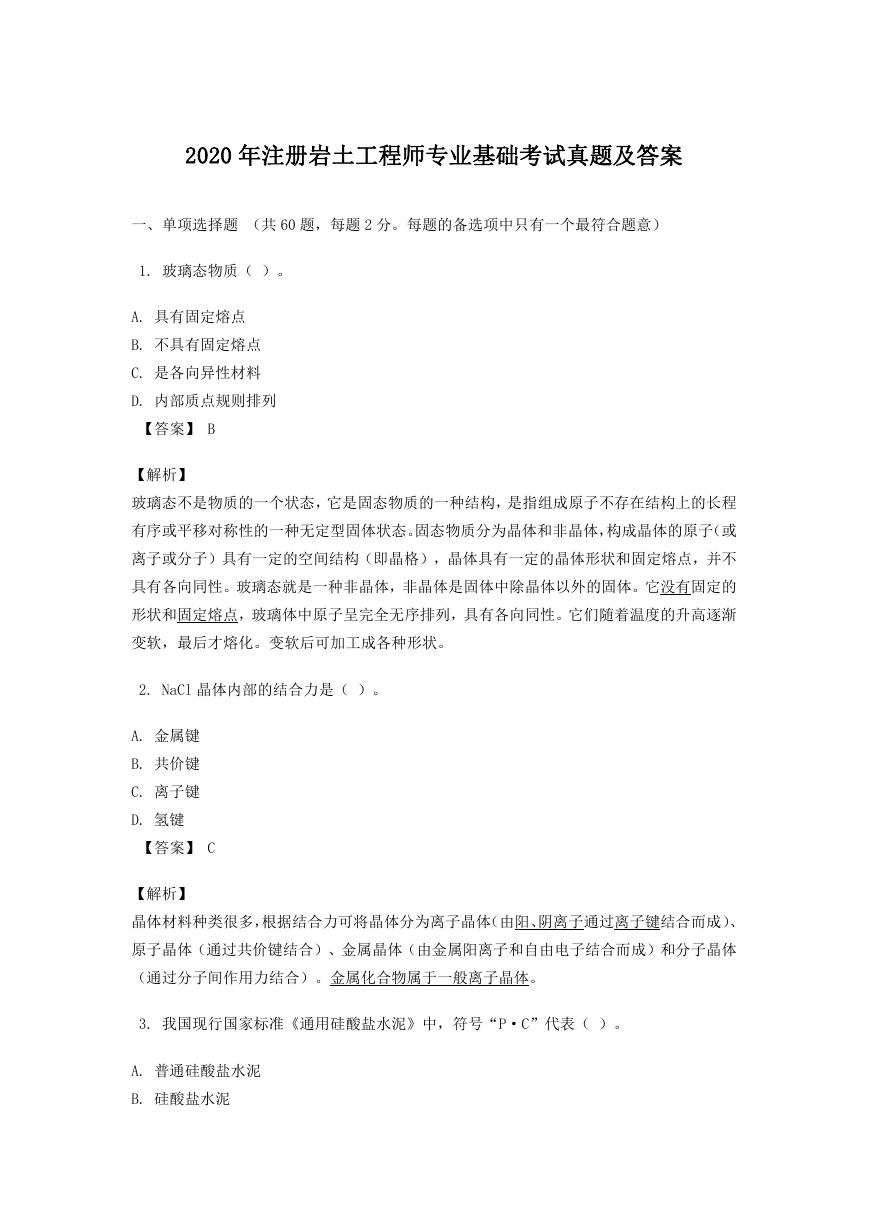 2020年注册岩土工程师专业基础考试真题及答案.doc
2020年注册岩土工程师专业基础考试真题及答案.doc 2023-2024学年福建省厦门市九年级上学期数学月考试题及答案.doc
2023-2024学年福建省厦门市九年级上学期数学月考试题及答案.doc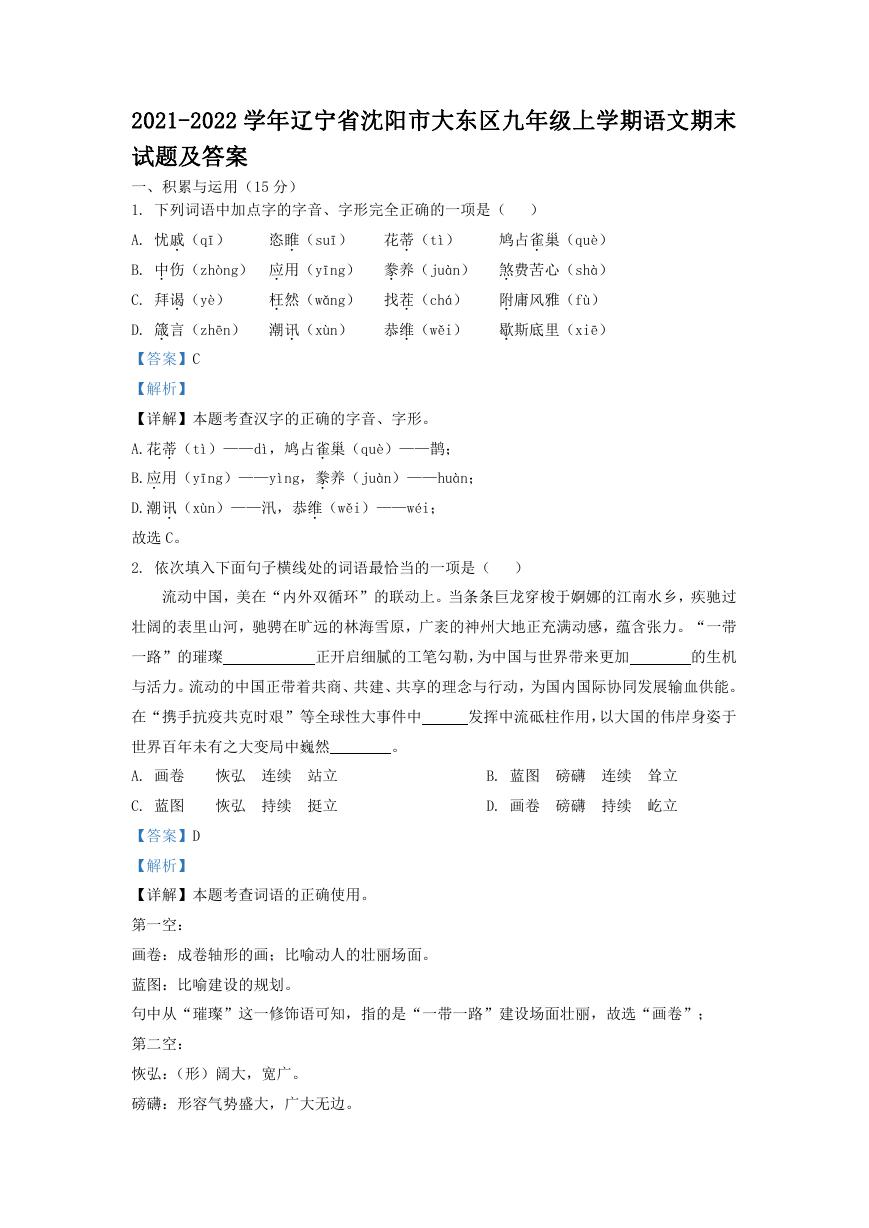 2021-2022学年辽宁省沈阳市大东区九年级上学期语文期末试题及答案.doc
2021-2022学年辽宁省沈阳市大东区九年级上学期语文期末试题及答案.doc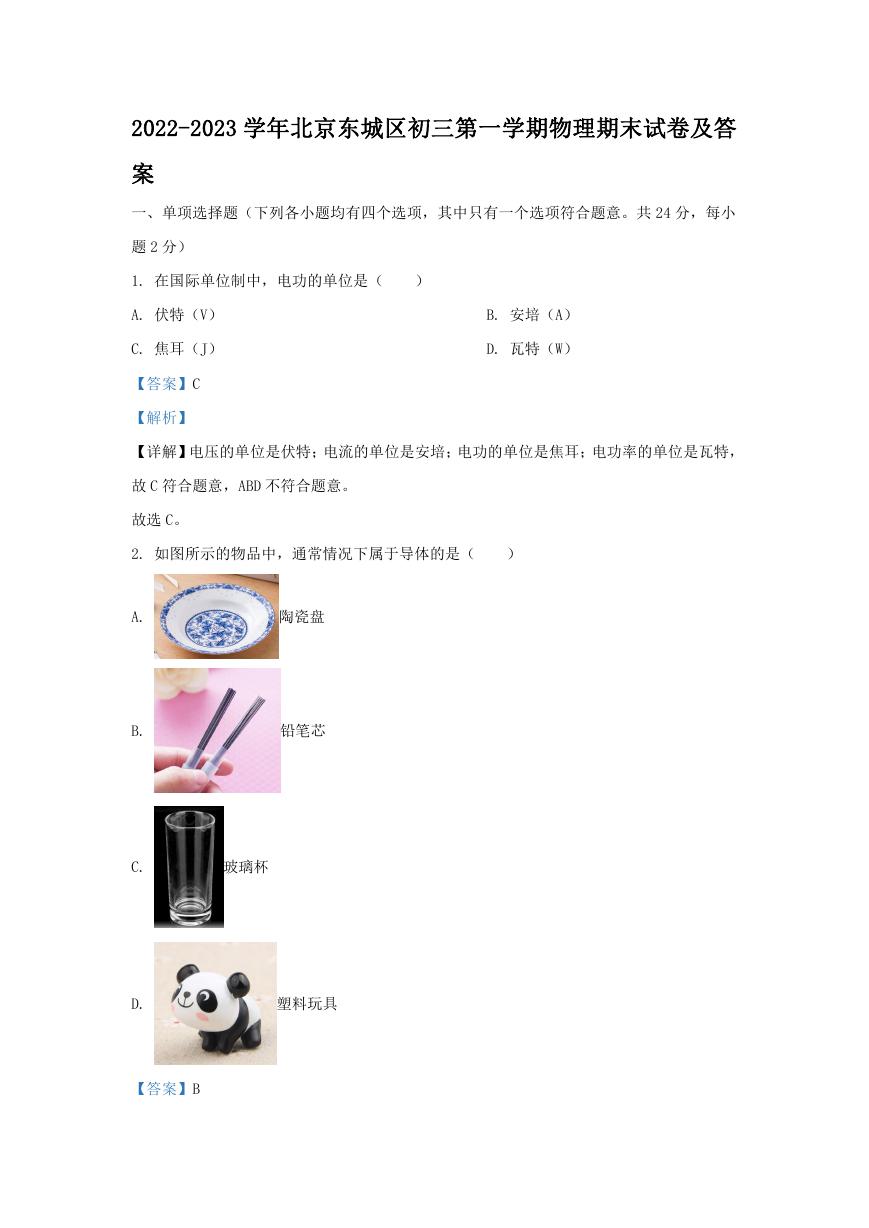 2022-2023学年北京东城区初三第一学期物理期末试卷及答案.doc
2022-2023学年北京东城区初三第一学期物理期末试卷及答案.doc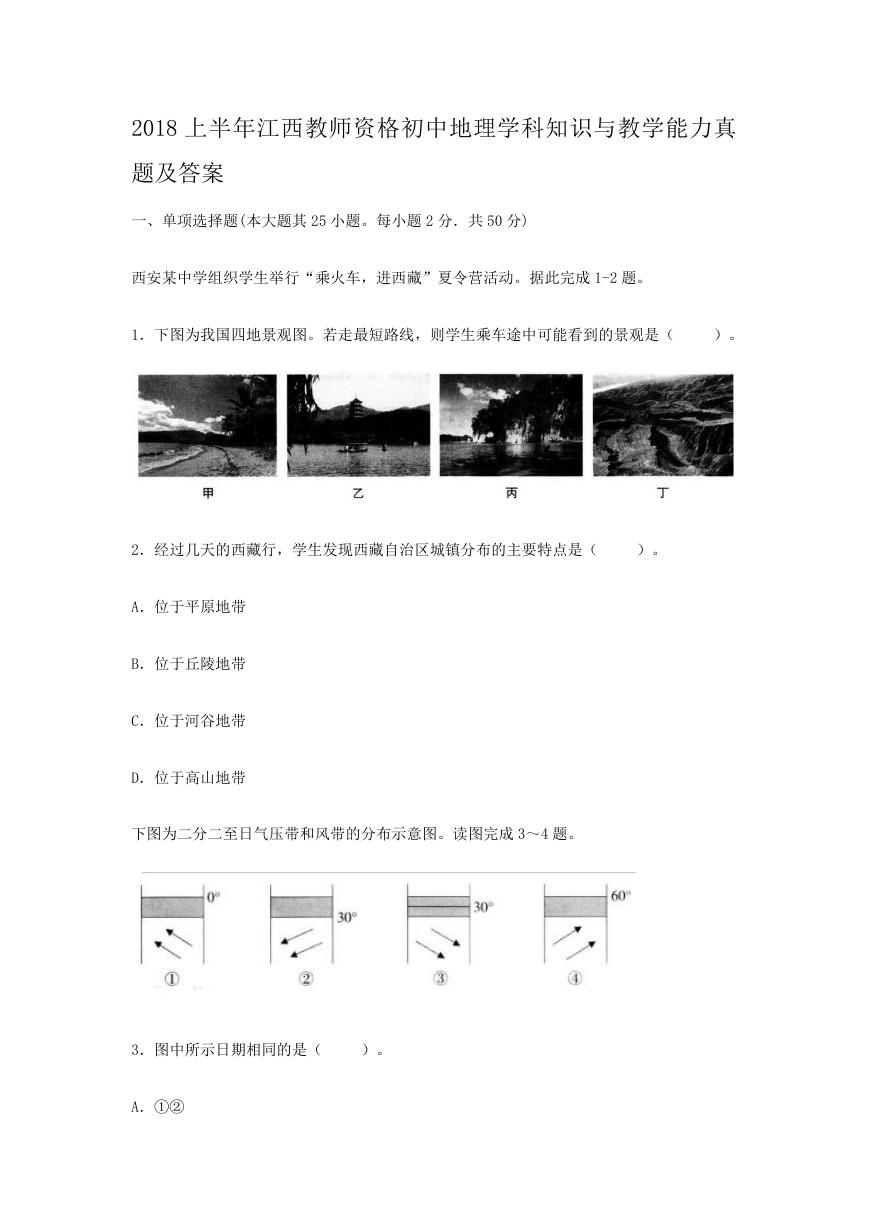 2018上半年江西教师资格初中地理学科知识与教学能力真题及答案.doc
2018上半年江西教师资格初中地理学科知识与教学能力真题及答案.doc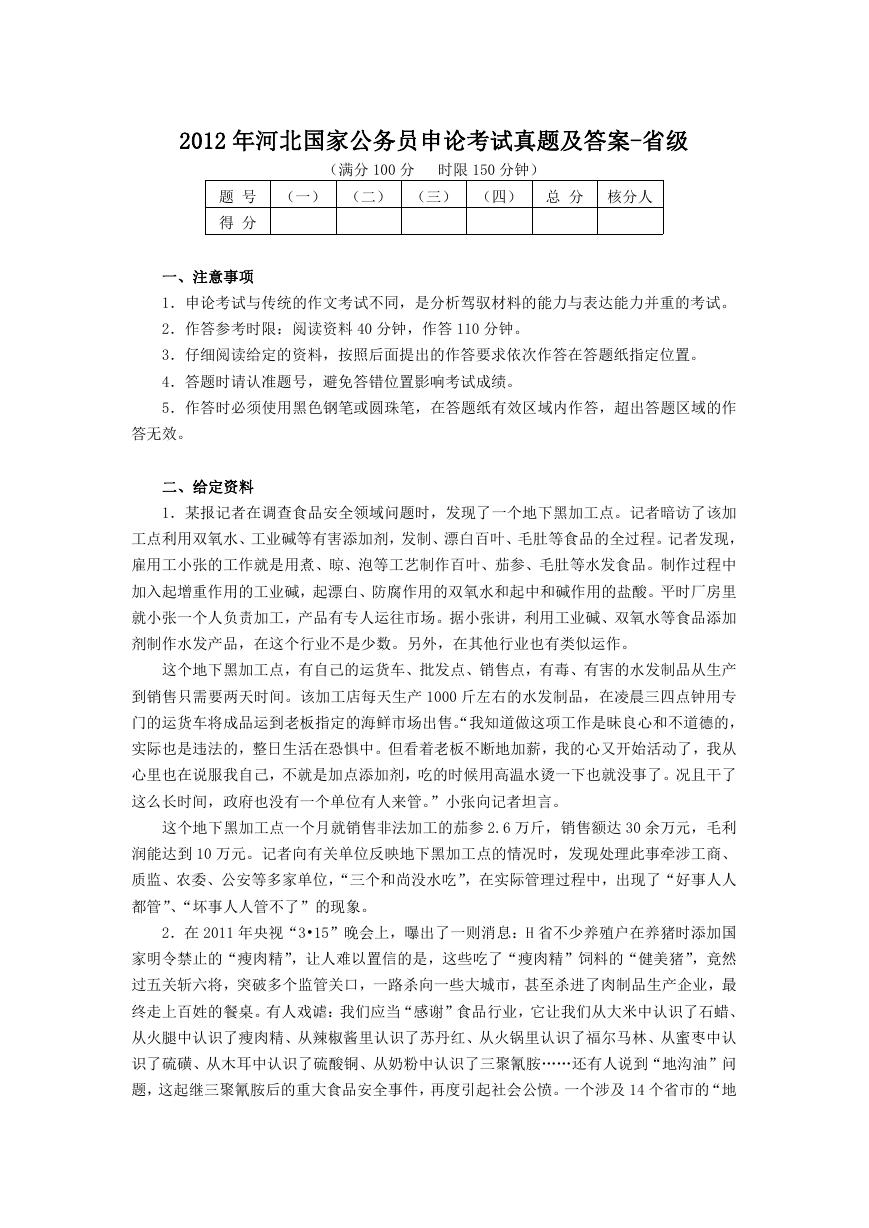 2012年河北国家公务员申论考试真题及答案-省级.doc
2012年河北国家公务员申论考试真题及答案-省级.doc 2020-2021学年江苏省扬州市江都区邵樊片九年级上学期数学第一次质量检测试题及答案.doc
2020-2021学年江苏省扬州市江都区邵樊片九年级上学期数学第一次质量检测试题及答案.doc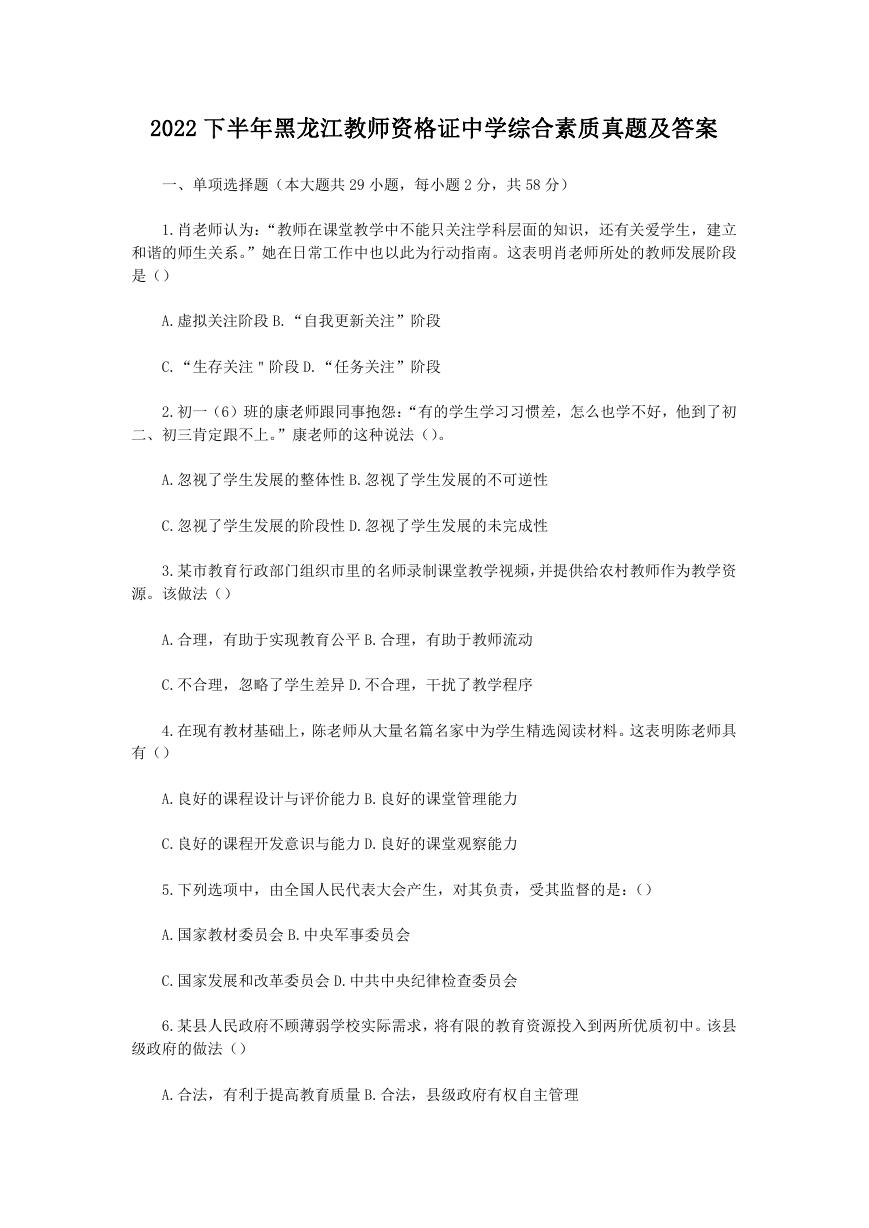 2022下半年黑龙江教师资格证中学综合素质真题及答案.doc
2022下半年黑龙江教师资格证中学综合素质真题及答案.doc